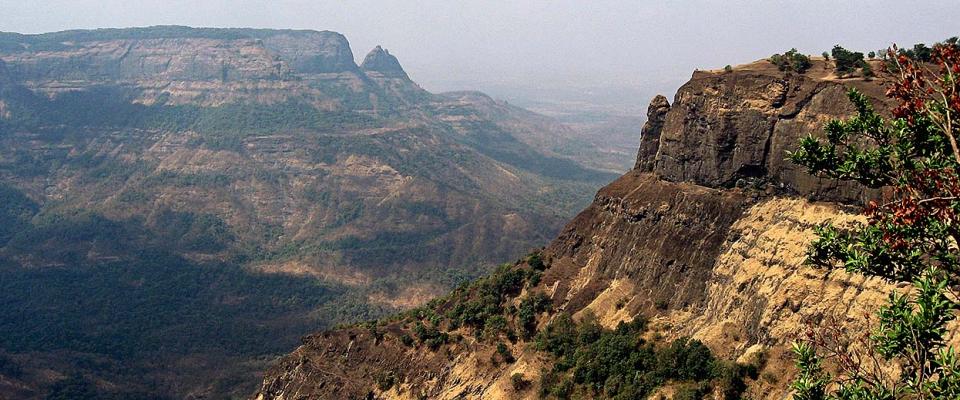Any third grader can tell you what killed the dinosaurs: an asteroid that smashed into Earth 66 million years ago, obliterating T. Rex, Triceratops, and Velociraptor, and paving the way for mammals to thrive.
But that theory was wildly controversial when first introduced in 1980 by Berkeley Nobel laureate Luis Alvarez and his son, Walter, a UC Berkeley paleogeologist. Their idea plunged the paleontology community into decades of acrimonious debate before it became the accepted explanation. Now the theory is being challenged once again.
Some researchers assert that the cause of the dinosaurs’ extinction was noxious greenhouse gases released by the Deccan Traps, giant lava flows whose emissions would have caused nightmarish levels of global warming. Located in what’s now India, these flows once gushed massive amounts of molten basalt from Earth’s mantle, the liquid rock layer just below the crust. “In less than a million years’ period, the volume of the basaltic lava that came out would’ve been enough to cover the state of California about a mile deep,” says Mark Richards, a Berkeley geophysicist.
The three biggest extinctions in Earth’s history occurred at the same time as major flood basalt events, a “coincidence that’s really hard to brush off …”
The three biggest extinctions in Earth’s history occurred at the same time as major flood basalt events, a “coincidence that’s really hard to brush off,” Richards says. So opponents of the asteroid theory surmise that these lava flows must have played a role in the dinosaur-killing extinction. This idea, once unpopular, now finds support from a new model put forth in an April paper in the Geological Society of America Bulletin, written by Richards and a disparate team of experts including Walter Alvarez.
It all came together for Richards in 2012. While on vacation with his family in the Yucatan Peninsula, he was struck by a “bolt of insight”: The magnitude 11 earthquake caused by the asteroid could have set off nascent volcanoes all over Earth, including the Deccan Traps. The consequences could have been literally earthshaking. “If the Deccan Traps’ main-phase most active eruptions were really triggered by an extraterrestrial impact,” Richards says, “then that’s probably the most important geophysical event of the last billion years of history.”
Some digging in India last March turned up supporting evidence. Ancient lavas dated after the impact were tens of meters thick, chemically distinct, and much more widespread than those prior. The fissures that fed the Deccan Traps were orderly prior to the impact, oriented east–west or north–south, and then suddenly became random, which the scientists think reflects an abrupt, powerful surge of magma. Other tests showed that the lava was chemically more similar to the mantle than to the crust, suggesting, Richards says, that the lava burst through the crust extremely quickly.
So, what actually killed the dinosaurs? It’s hard to say. But we can no longer rule out the Deccan Traps as totally irrelevant, says Paul Renne, a Berkeley geochronologist and a coauthor of the paper. “It’s possible to look at it as if the asteroid was the gun, and the volcanoes were the bullet,” he says. “That the impact chose the timing—it unleashed a system that wasn’t really going to its full potential.”
Renne doesn’t expect their hypothesis to convince everyone, but both scientists are confident more evidence will soon emerge. “As we get more precise geochronology and a more precise understanding of the sequence of events,” Richards says, “we’re hopeful that we will begin to resolve this in an amicable way.”
—C.L.
From the Fall 2015 Questions of Race issue of California.



















